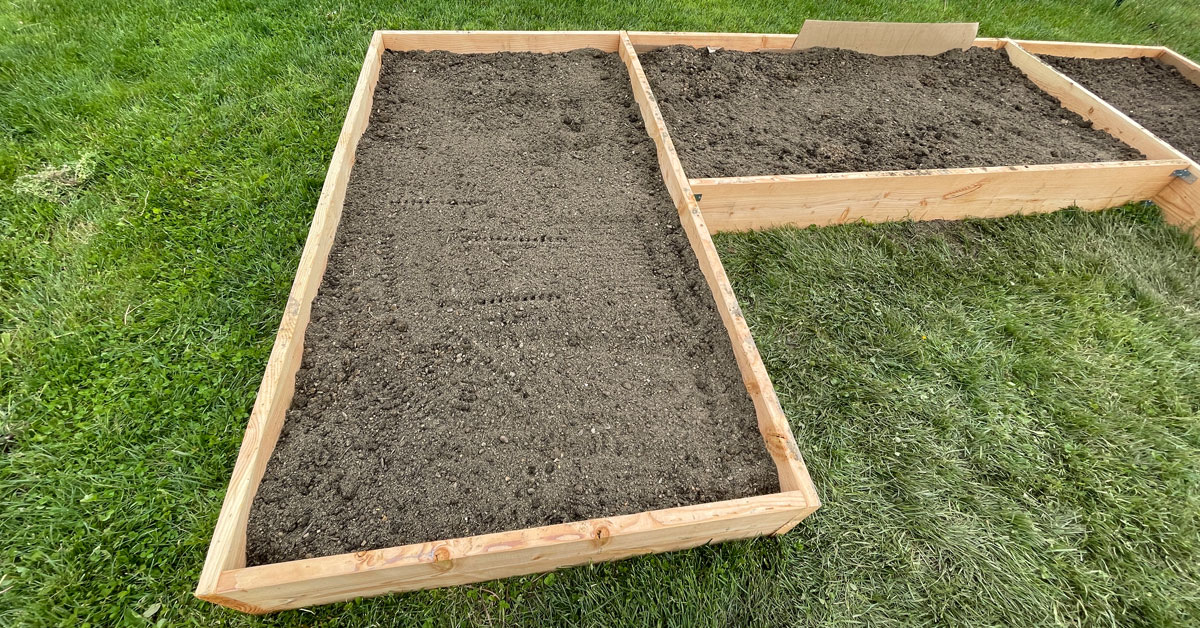This post may contain affiliate links. When you purchase through links on my site, I may earn a commission at no cost to you. See my Privacy Policy for details.
Are you looking to build a raised garden bed? Many people are discovering the joy of gardening and self-sufficiency. If you’re new to gardening, a raised garden bed is a great option. Not only does it provide better soil quality, but it also allows for easier planting and harvesting.
Choosing the Right Size Raised Bed
When deciding on what size raised bed to build you need to consider a few things. How much space do you have to put raised beds in? What types of plants do you want to grow? Do the plants have shallow roots or are they root crops that want to grow deep into the soil? These are all questions I answered before deciding what size raised bed to build.
Before building your raised bed, you need to consider how much space you’ll need and the types of plants you want to grow. Will the plants have shallow roots, or will they want to grow deep into the soil like carrots?
For me, a 4-foot by 8-foot raised bed is ideal. It’s big enough to hold a good amount of plants, but not too wide that I can’t reach the middle from either side when harvesting. Depending on your height and reach, you might want to consider making the bed 3 feet by 8 feet, though it will reduce the amount of plants you can grow in the bed.
I also decided the minimum height for my beds would be 12 inches, mostly because I want to be able to plant carrots and parsnips and they produce best in deep loose soil.
Selecting Materials
When it comes to materials, there are various options to consider. I used 2-inch by 12-inch by 8-foot Douglas Fir boards from Home Depot. However, if wood prices are still high, so you might explore alternatives like cinderblocks, bricks, or metal. Choose materials based on durability, cost, and aesthetic preference.
It comes down to cost and how you would like your garden to look. I didn’t go with anything too fancy because I am more concerned about plant capacity than how they look. Eventually, the wood of my garden beds will break down, but I can replace the boards if I have to. Cinderblocks, bricks, and metal won’t break down as easily as wood so may last longer in your garden.
Step-by-Step Guide
Here are my steps for building your raised garden bed with wood boards:
Equipment
Materials
- 2 2 in x 12 in x 8 ft Douglas Fir Boards
- 2 2 in x 12 in x 4 ft Douglas Fir Boards
- 12 3-inch exterior wood screws
- Cardboard (Cover the bottom of 4×8 bed)
Step-by-Step Instructions
- We ordered two 2-inch x 12-inch x 12-foot boards so we needed to cut them down into the required sizes to build the raised bed. I used a circular saw to cut the 12-foot boards into 4-foot and 8-foot pieces. You can skip this step by having a person at Home Depot or Lowes cut the boards down to size for you.
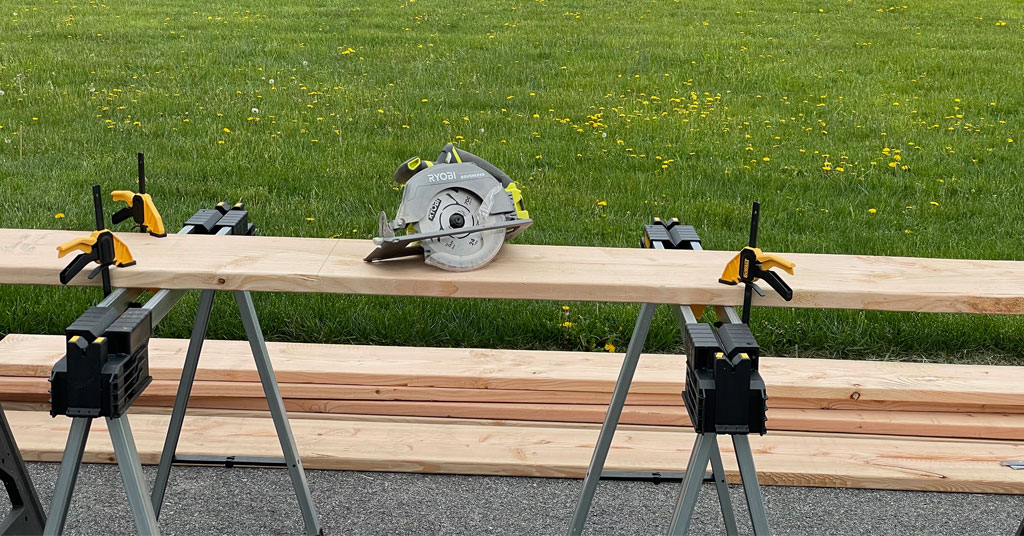
- I found building the raised bed close to its final location is the best since the raised bed is very heavy and bulky to carry once built. Take 1 four-foot board and 1 eight-foot board and put them together in an L shape. We put the 4-foot board on the inside edge of the 8-foot board. Using your screw gun and exterior wood screws, screw 3 screws into the 8-foot board edge so they connect the 2 wood pieces. Space the screws so there is 1 at the top, 1 in the middle, and 1 at the bottom. Try to make sure there is as little of a gap as possible between the 2 pieces of wood.
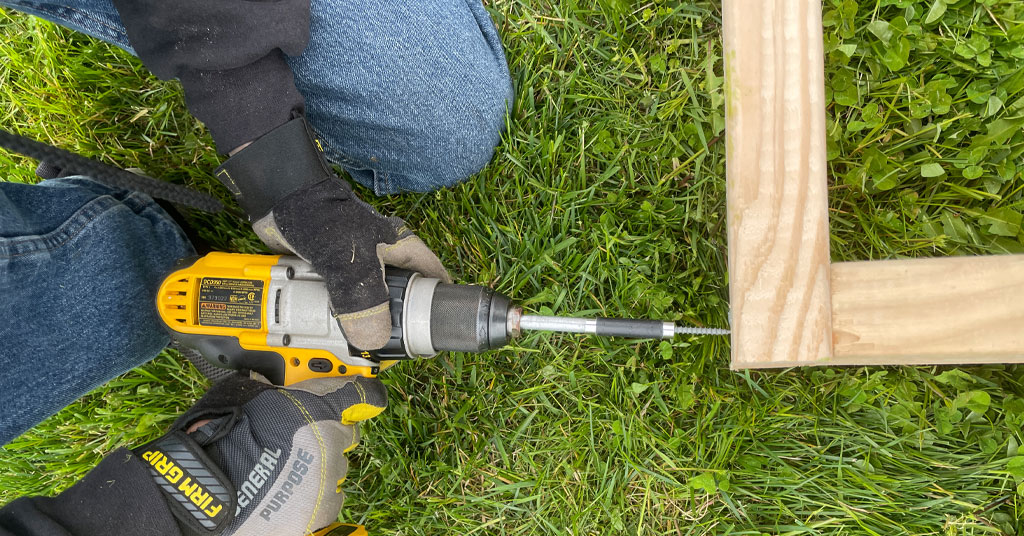
- Next, add the second 8-foot board to the other end of the 4-foot board you were using following the same method as above. You want to screw in the longer sections first because it is easier to bend the longer boards if for some reason your wood is a little warped when screwing them together.
- Insert the last 4-foot board in between the ends of the 2 8-foot boards on the other end. Using 3 screws on each end attach the 4-foot board to the 2 8-foot boards. Congratulations you have built a raised bed!
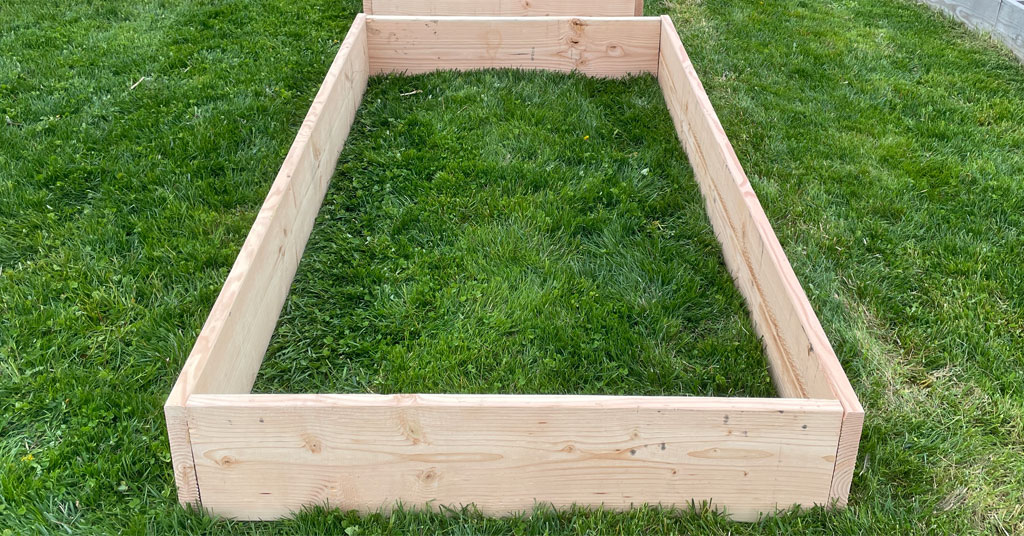
- Move the raised bed into its final location.
- I like to line the bottom of my raised beds with cardboard. This will help to smother any weeds or grass that may be in the bottom of the raised bed.
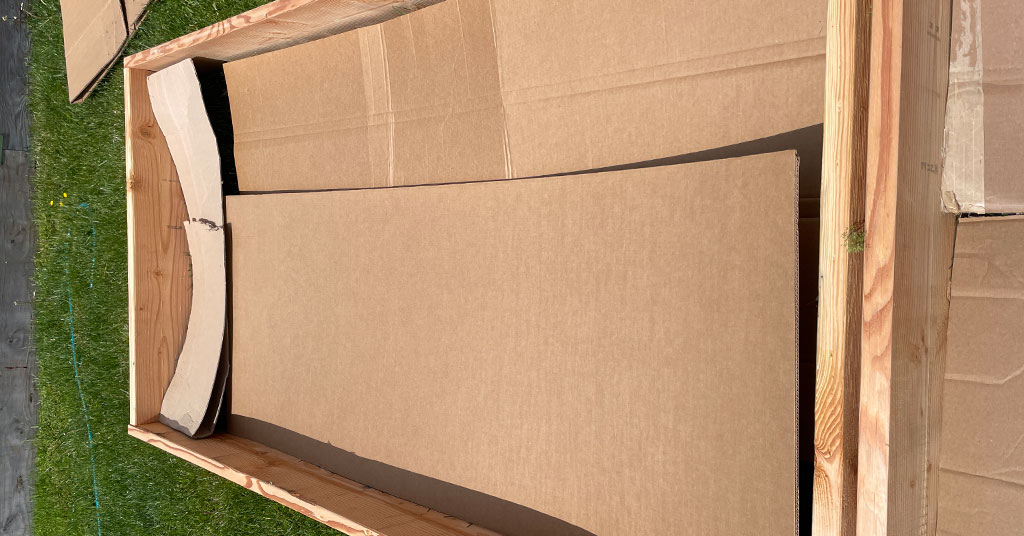
- Fill the raised bed with the best quality soil you can buy. Don’t skimp on this piece because your soil is the most important part of your garden. Better soil will help you grow healthy plants.
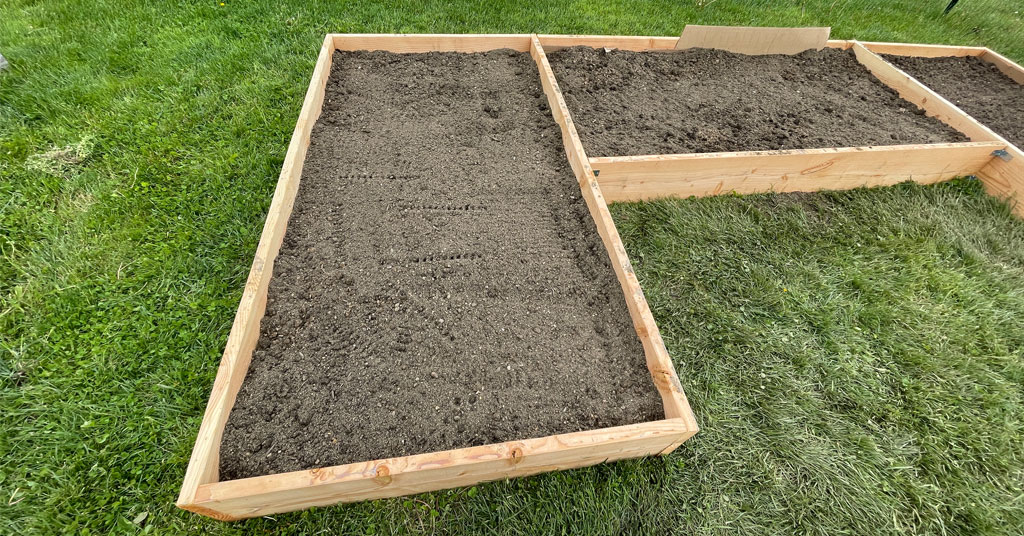
Expanding Your Garden
Now that you have the skills to build one 4-foot by 8-foot by 12-inch raised garden bed you can use those skills to put them together into different configurations that can be used in your garden. I love creating U-shaped garden beds and using them at the end of the different rows. Below is an image of my current bed layout.
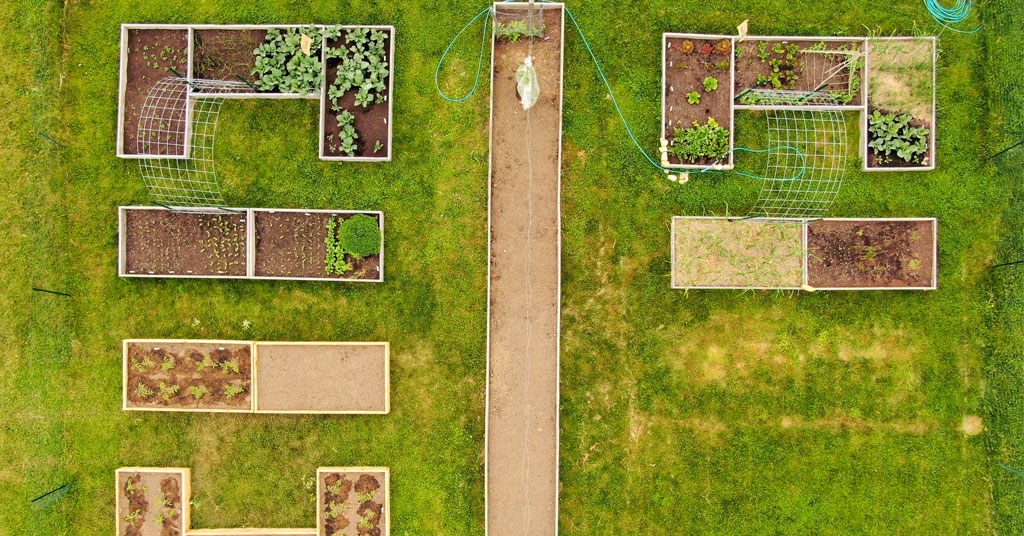
Discover More DIY Garden Ideas
I love to build things for my garden. Building raised garden beds was a simple way for me to get started building things for my garden. Interested in building other items that can be used in your garden? Take a look at some of my other posts for building items for your garden:
I hope you continue to build the garden of your dreams. If you are interested in my tips and tricks in the garden please join my mailing list to get the most up-to-date information about what I have going on in the garden.

